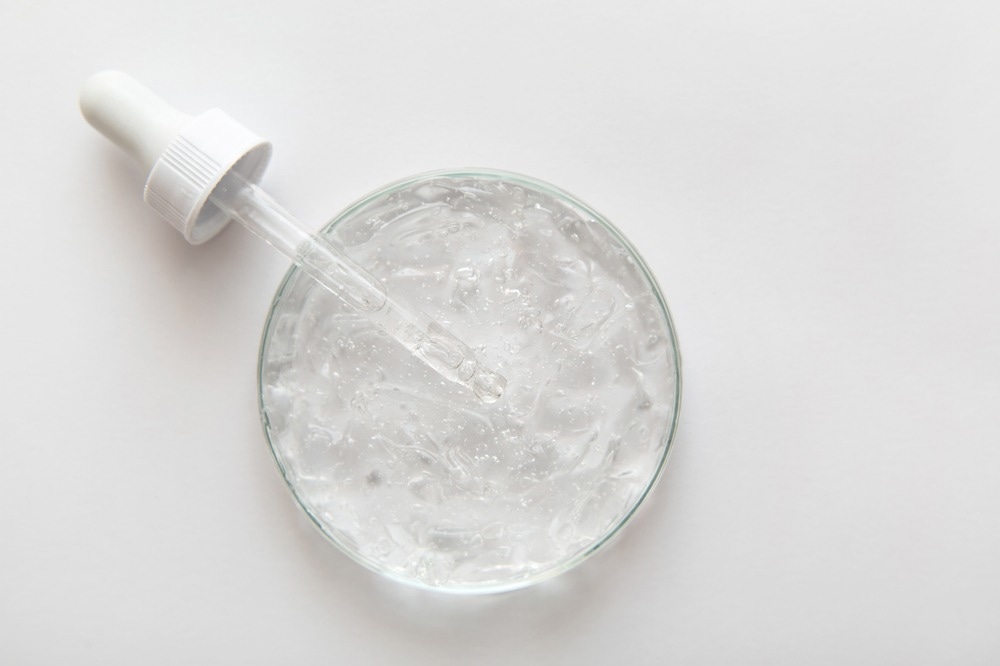 By Surbhi JainReviewed by Susha Cheriyedath, M.Sc.Jul 11 2022
By Surbhi JainReviewed by Susha Cheriyedath, M.Sc.Jul 11 2022In an article recently published in the journal ACS Applied Polymer Letters, researchers discussed the utility of hydrogel scaffolds loaded with algal biomass as a biomimetic platform with wound-healing and antimicrobial properties.

Study: Algal Biomass-Loaded Hydrogel Scaffolds as a Biomimetic Platform with Antibacterial and Wound Healing Activities. Image Credit: Ivanova Tanja/Shutterstock.com
Background
Due to their distinct three-dimensional (3D) porous matrix, flexibility, and high water content, hydrogels can mimic human soft tissues and have been investigated as potential materials for particular drug delivery and wound healing applications. Similar to this, anti-oxidant dressings can aid in removing excess reactive oxygen species (ROS) that could cause oxidative stress and DNA damage.
They are an intriguing option for applications in topical infections like wound infections due to the integration of wound healing composites to hydrogel-based platforms with the incorporation of various agents, including antimicrobial and plant extracts to prevent wounds from being infected by bacteria. To date, various natural substances have been investigated as medicines to treat skin conditions and wound damage with the hopes of accelerating the healing process and reducing the price of raw materials.
Oxygen levels control cell migration, proliferation, and neovascularization, which is crucial for wound healing. Maintaining an optimum oxygen level is a crucial prerequisite to speeding up wound healing.
About the Study
In this study, the authors discussed the single-step development of algal (Chlorella sorokiniana) biomass-loaded hydrogel scaffolds (AHS) for combining hydrogel scaffolds with dried algal biomass (AB), which contained all the bioactive components to speed up wound healing and also provide antibacterial advantages. AHS made up of various AB concentrations was administered to mouse excisional wounds for 14 days.
The team carried out microscopic examinations, histological studies, and cytokine testing to learn more about how wounds heal. With the use of Fourier transform infrared spectroscopy, atomic force microscopy, X-ray diffraction, Raman scattering, scanning electron microscopy, transmission electron microscopy, swelling, thermal, rheological, and mechanical investigations, these scaffolds were thoroughly characterized and investigated.
The researchers developed a novel method in conjunction with the AB component for the manufacture of AHS, which promoted wound healing in mouse models. Their suitability as a raw material for the creation of wound dressings as well as a topical preparation for the treatment of wound infections was emphasized. The goal of the current study was to assess AHS, a topical formulation made from green microalgae produced autotrophically, for its potential to cure excisional cutaneous lesions in mouse models.
Observations
At 7.4 pH, HS and AHS initially exhibited rapid swelling from 7 to 9 hours. After 15 hours, the equilibrium swelling was attained with maximal swellings of 2000% and 1900%, respectively. At pH 1, however, the greatest swelling for HS and AHS was up to 1000% and 800%, respectively. The contact angles were determined to be 80.0° and 77.9° and 37.2° and 31.6°, respectively, for 0.05 and 0.3% AHS. At 24 hours of incubation for HepG2, the results revealed 95% cell viability in the presence of test substances. In contrast to the significantly higher incidence of IL-10 in the AHS-treated group, the level of IL-10 in the HS, 0.3% AHS-treated mice, and 0.3% AB, was only slightly higher.
AHS exhibited good antibacterial effectiveness of 99% against Escherichia coli and of 98% against Staphylococcus aureus in addition to having great biocompatibility. In addition to antibacterial properties, the as-synthesized AHS had the potential to increase the repertoire of more efficient wound healing techniques. Hybrid hydrogel's enhanced wound-healing capacity showed better antibacterial properties and quicker wound healing when the filler percentages were ideal. They also exhibited a remarkable swelling ratio, excellent extensibility, and superb biocompatibility. All of these findings showed how photosynthetic organisms had the potential to develop novel medicines in the field of biomedicine in the future.
Conclusions
In conclusion, this study demonstrated the close relationship between polymeric hydrogels and dried AB, which has important ramifications for improving the characteristics of AHS as a composite material. The authors added AB to the polymeric hydrogels, which improved the mice model's ability to repair wounds. Notably, the AHS showed remarkable antibacterial efficacy against S. aureus and E. coli. Higher skin appendages and collagen deposition were encouraged by the 0.3% AHS in comparison to the control groups, whereas fibroblast and inflammatory cell numbers were decreased and basal laminae were clearly visible.
The antioxidant and phytochemical characteristics of the AB found in the AHS were varied. The authors stated that the active ingredients in the AB work in tandem to speed up wound healing. The extraction of the active components from microalgae would also require a number of downstream processes, which would raise the expense of the research and make scaling up difficult. The findings suggested that adding AB to the polymer matrix may improve its capacity for wound healing and open the door to the creation of new potential biomaterials for use in tissue engineering.
The authors believe that future research on these materials could lead to the development of pro-regenerative microenvironments by delivering therapeutic molecules to the site of the wound and simulating the characteristics of the native extracellular matrix.
Disclaimer: The views expressed here are those of the author expressed in their private capacity and do not necessarily represent the views of AZoM.com Limited T/A AZoNetwork the owner and operator of this website. This disclaimer forms part of the Terms and conditions of use of this website.
Source:
Agarwal, A., Sullivan, P., Fu, H-C., et al. Algal Biomass-Loaded Hydrogel Scaffolds as a Biomimetic Platform with Antibacterial and Wound Healing Activities. ACS Applied Polymer Materials (2022). https://pubs.acs.org/doi/10.1021/acsapm.2c00722